If you head to the chicken aisle at your local grocery store, then much of the chicken you see is from a Cornish chicken or across with this breed as they are one of the top poultry meat producers. This breed provides delicious meat on our dinner table. You may want to consider raising Cornish chickens at home.
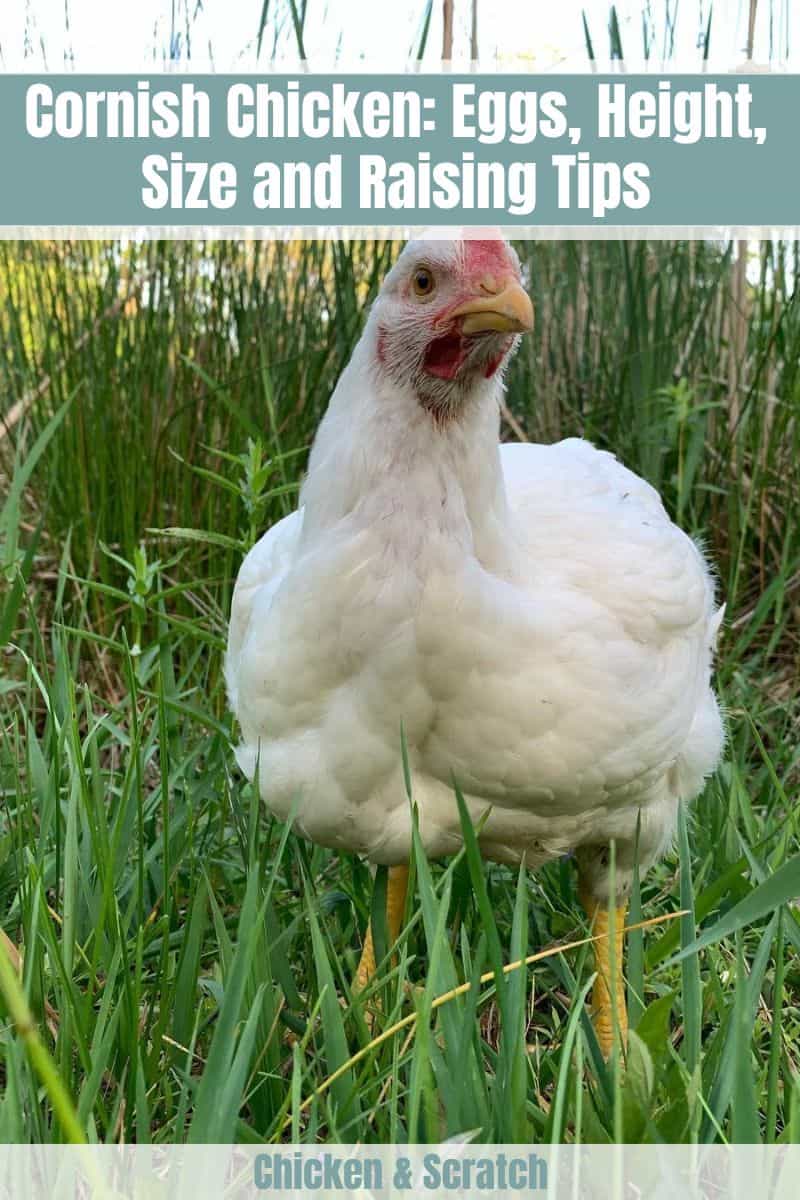
History of Cornish Chickens
Called the Cornish chicken in America, this breed is called the India game chicken in Australia. The Poultry Club of Great Britain also calls it the India game chicken.
It is believed that Sir Walter Raleigh Gilbert of England first developed the breed about 1820. He took a red aseel hen and bred it to black-breasted red-game rooster to create this breed.
He chose a red aseel because of its immense power and a black-breasted red-game rooster because of its incredible speed. While he hoped to create a breed that exhibited the best of both for game fighting, when crossed, Cornish chicken lost their desire to fight.
The breed began being shown about 1858 in the Cornwall, England, area with other breeders combining this crossbreed with Malay chickens and other breeds. The breed was first brought to America about 1887, and the American Poultry Association first recognized it in 1893.
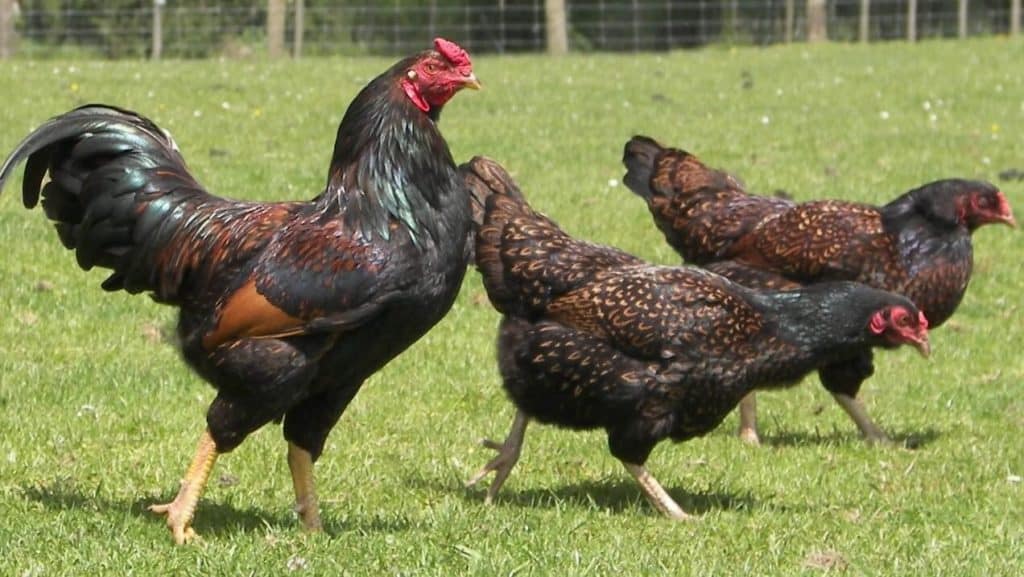
The original name adopted by the American Poultry Association was India game chicken. Two varieties were recognized starting in 1898; the Cornish Indian game and white Indian game chickens.
The name Cornish chickens were officially adopted in 1905 when authorities moved the bird from the Oriental classification to the English classification. Part of the reason for the move was that this breed had no desire to fight, and no connection to India.
While white Cornish chickens were recognized in 1898, the American Poultry Association recognized the white-lace red in 1909 and the buff Cornish chicken variety in 1938. While some breeders bred black Cornish chickens, they were not officially recognized by the organization.
This chicken is unique because the breed standard is precisely the same for hens and roosters.
Cornish Chicken Breed Standard and Appearance
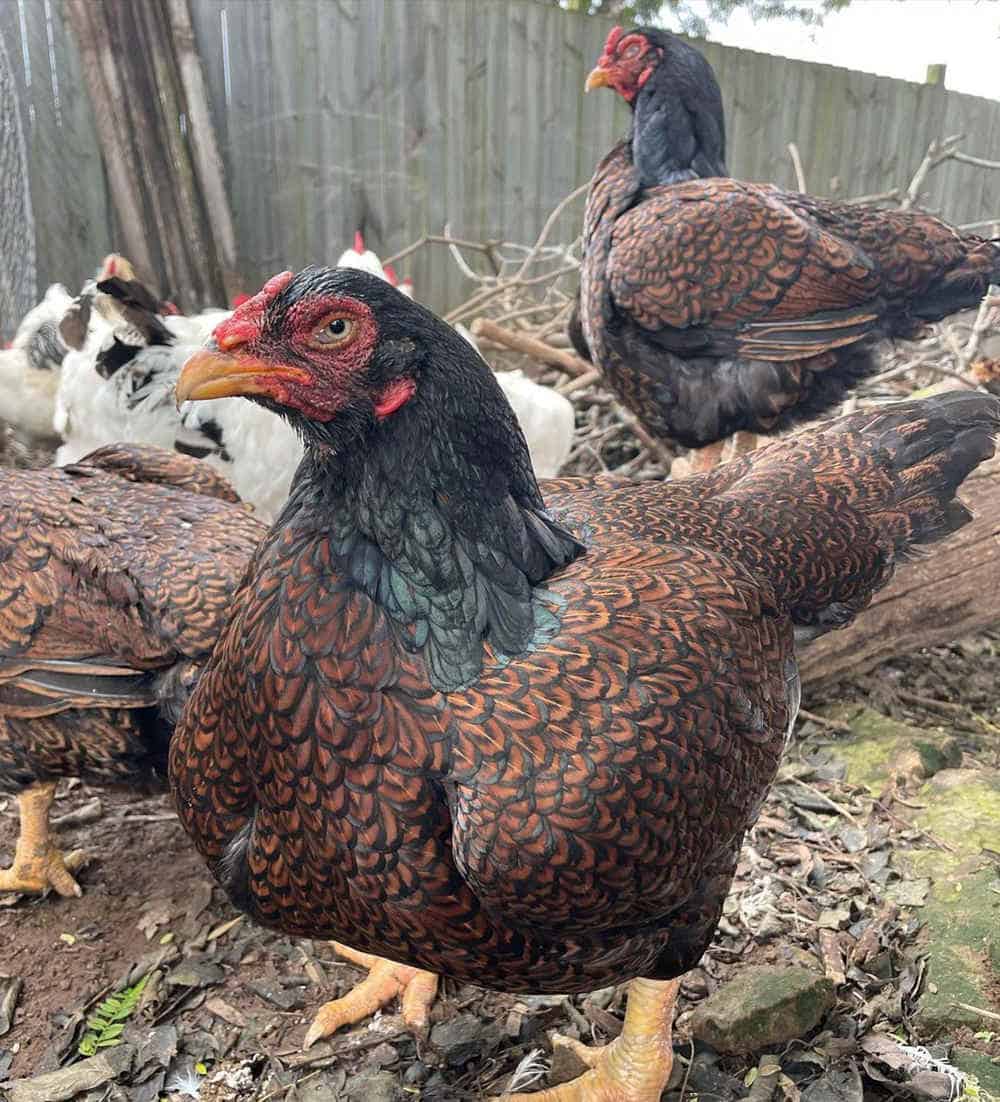
The main thing to look for in a Cornish is a well-meated breast. If you view a Cornish from the top, then it should have a heart shape with the fullest part of the heart being at the front of the bird and the tail forming the tip of the heart.
They have short legs that are set apart wider than in most chickens. Their legs are yellow in appearance, and this is particularly true if the grass is part of their diet. Mature hens weigh about 3.57 pounds with roosters weighing slightly more.
Cornish chickens have a pea comb. It is common for young birds to have three rows of pea-shaped circles located in neat rows. As the bird grows, however, these combs often lose their uniform appearance. Therefore, they often look like they have a blob located on top of their head. Cornish chickens also have a slightly rounded beak and deep, wide-set eyes.
The feathers on a Cornish bird are extremely short and tightly grouped. They are, however, much thinner than on most chickens. The color of the feathers varies depending on the variety of Cornish chicken, but the most common is the dark Cornish. These birds have a blue-green tint when you look at them.
Personality and Temperament
Cornish roosters can be more assertive than many domestic chicken breeds. Hens, however, are quiet and docile. Both roosters and hens need more room to exercise than an ordinary domestic chicken, or they will develop stiff legs and become even crankier.
Generally, Cornish chickens are docile towards their handlers, but they do require more room than the average chicken, or they will become aggressive.
Cornish mothers tend to be excellent mothers, but they can get aggressive when they think their young are being attacked. They tend to be more broody than some breeds. They may sit on a nest without eggs in it or on a rock or other area of their cage. Their lack of tail feathers, however, means that they can cover very few eggs.
Cornish chicks tend to be more cannibalistic than other breeds. This behavior often starts as feather pulling or pecking when the chicks are only a few days old. Then, it may escalate to aggressive pecking if an injury occurs.
Since this tends to be a learned behavior, eliminating stressors before and after hatching can help reduce cannibalism. Any injured chicks should be removed from the flock and receive separate veterinary care.
Cornish Chicken Egg Laying

Cornish chickens are not prolific egg layers. Generally, they lay fewer than 160 eggs per year. These eggs are small and brown. Physically, their body structure, which is designed for meat production, limits their egg-laying capacity. Instead, they are a meat chicken, which you are very likely to love as it usually has a stronger flavor than other breeds.
Since most broiler chickens are killed between eight and 12 weeks for meat, they also do not have many opportunities to lay eggs. Since these hens do best as foragers, it can also be challenging to gather the eggs.
If you are interested in increasing the number of eggs that Cornish hens lay, then you may want to think about crossing your Cornish with another egg-laying breed and keeping those chickens as your egg producers. A typical cross is between Cornish and white rock chickens.
This produces a brown egg that is bigger. It also helps your chickens continue to lay eggs throughout the year. They are especially prolific in colder months when lighter chickens do not tend to lay as well. Another cross worth considering is the barred rock cross.
Health Issues and Care
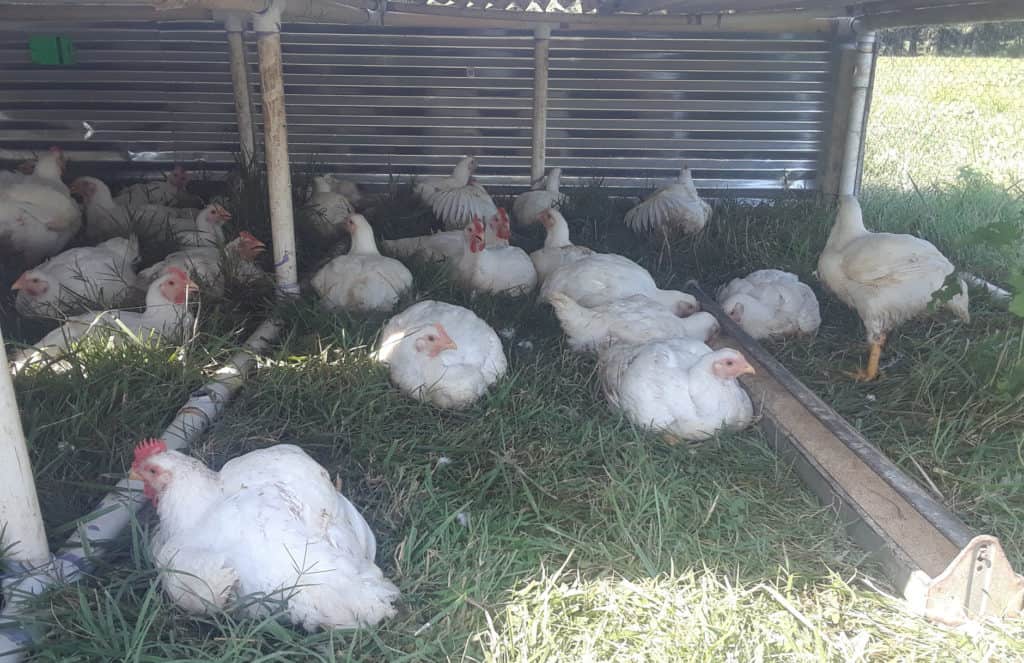
Generally, Cornish chickens are healthy, but they can suffer from leg problems, such as blown or torn ligaments, joint degeneration, and chronic pressure sores on the hocks and feet. If you notice joint issues, then it is essential to seek veterinary care quickly as this can be a sign of infection in the chicken’s body.
Blown ligaments are common, so make sure that you see each bird walk regularly. It is particularly common in heavier birds, and you will usually need to euthanize the bird.
Impacted crops are another common problem that you may encounter. This small pouch-like organ at the end of their esophagus is the first to receive the nutrition that the bird eats. Cornish chickens will keep eating after they are full, and they will eat anything. This can cause the crop to become distended and stop functioning.
Then, you are likely to notice a pouch in the chicken’s lower neck area. When this occurs, you need to call the vet because the crop needs to be drained.
Improper draining can lead to death, so a trained professional must perform this procedure. The vet may also prescribe medication or recommend surgery. Note that the operation requires a lot of after-care.
6 Tips for Raising Cornish Chickens
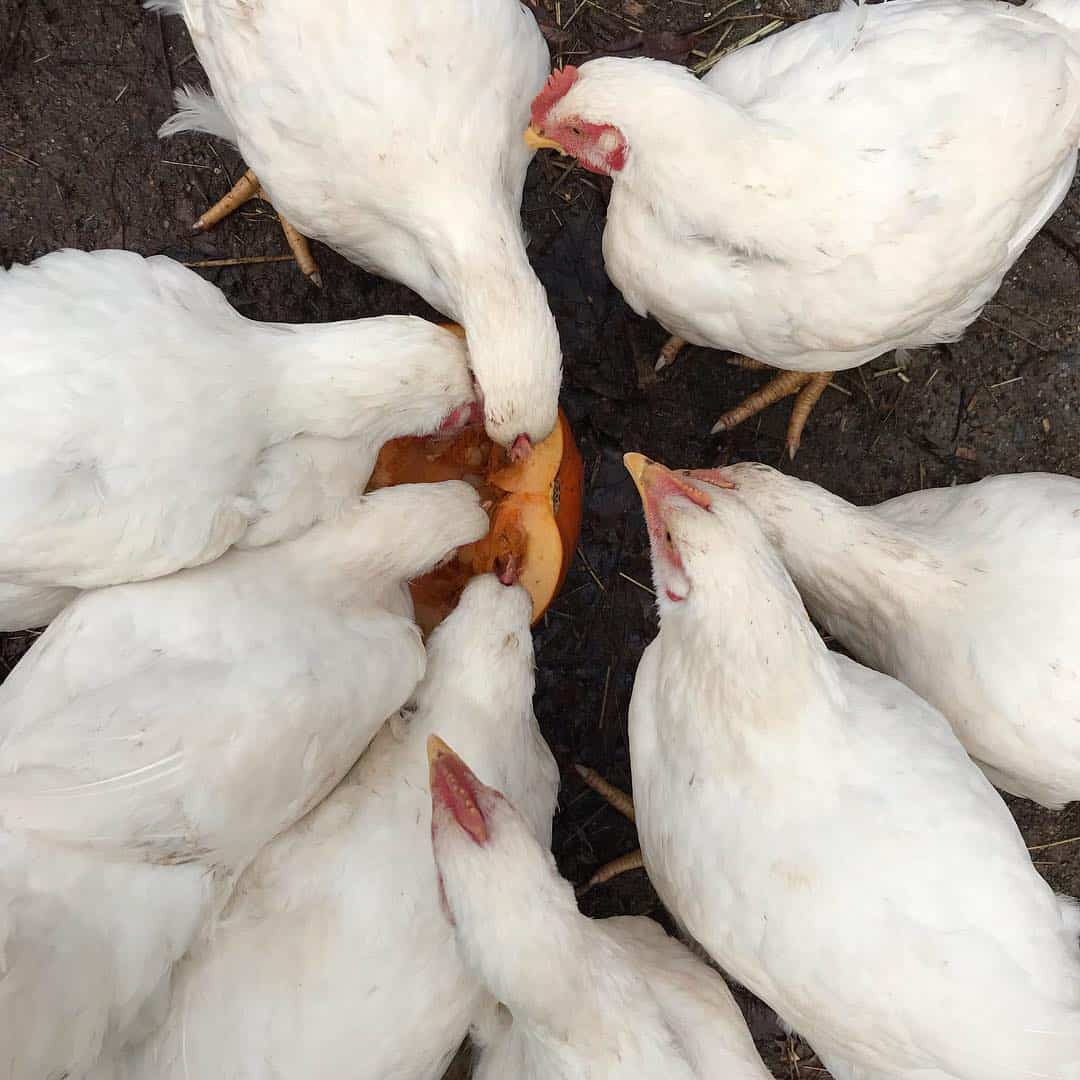
If you keep a few tips in mind, you increase the likelihood that you will raise your Cornish chickens successfully. These tips include:
- Quarantine all new birds for at least 30 days. If you see any signs of sickness, then put the straw and these chickens’ eggs in a separate place until you determine if the poultry is sick and if it is contagious. During this time, wear protective clothing to prevent the potential spread of disease.
- Cornish chickens need a larger area to grow than most chickens. This breed does well as foragers, which gives you the opportunity to free-range these birds. If you choose to keep them inside, then allow a minimum of 2 square feet of run space per bird. They should have at least 6 square feet of coop space. If you are using a mobile chicken trailer, then each bird should have 3 square feet of floor space, and the trailer should be moved at least three times a week.
- Nutrition plays a vital role in raising these meat chickens. Each bird should have at least 3 inches of feeder space. Your feed should contain at least 20 % protein.
- Be careful not to raise your Cornish on sloped surfaces that are covered with wet litter. This increases the chances of leg problems, and it can cause the breast not to develop properly.
- Cornish chickens need water to develop properly. You should place the lip of the waterer even with the chicken’s back. Make sure to provide 6 inches of drinking space per bird. Freshwater should be available at all times. Therefore, make sure that you are changing the water every day.
- Controlling the temperature is vital when hatching chicks or getting new ones. In the first three hours, they should be kept at 99 degrees. Then, the next week, they should be kept at 95 degrees. Continue to decrease the temperature weekly by five degrees until the chicks have all their feathers.
Summary
Cornish chickens originated near Cornwell, England, but they were imported into the United States before the start of the 20th century. They are a delicious meat chicken with a strong flavor, but they are not a very good egg layer unless crossed with another breed. Keep alert for any health concerns, and be sure to feed the right food and always provide fresh water.

Joseph Hudson has been raising chickens for over 15 years. In 2018, he completed the Agriculture & Natural Resources program at Mt. San Antonio College. He currently raises over 1400 chickens on his 7.5-hectare farm. He keeps sharing his experience on raising healthy and happy chickens on Chicken Scratch The Foundry.








When should I change from starter food to regular food for my Cornish rock